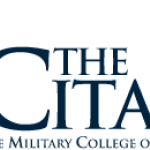- Industry: Education
- Number of terms: 941
- Number of blossaries: 0
- Company Profile:
The pattern of related comparative aspects of language, particularly of images, in a literary work.
Industry:Literature
A concrete representation of a sense impression, a feeling, or an idea. Imagery refers to the pattern of related details in a work. In some works one image predominates either by recurring throughout the work or by appearing at a critical point in the plot. Often writers use multiple images throughout a work to suggest states of feeling and to convey implications of thought and action
Industry:Literature
A character who contrasts and parallels the main character in a play or story.
Industry:Literature
An interruption of a work's chronology to describe or present an incident that occurred prior to the main time frame of a work's action. Writers use flashbacks to complicate the sense of chronology in the plot of their works and to convey the richness of the experience of human time.
Industry:Literature
A form of language use in which writers and speakers convey something other than the literal meaning of their words. Examples include hyperbole or exaggeration, litotes or understatement, simile and metaphor, which employ comparison, and synecdoche and metonymy, in which a part of a thing stands for the whole.
Industry:Literature
A brief story with an explicit moral provided by the author. Fables typically include animals as characters. Their most famous practitioner in the west is the ancient Greek writer Aesop.
Industry:Literature
The first stage of a fictional or dramatic plot, in which necessary background information is provided.
Industry:Literature
The selection of words in a literary work. A work's diction forms one of its centrally important literary elements, as writers use words to convey action, reveal character, imply attitudes, identify themes, and suggest values. We can speak of the diction particular to a character, as in Iago's and Desdemona's very different ways of speaking in Othello. We can also refer to a poet's diction as represented over the body of his or her work, as in Donne's or Hughes's diction.
Industry:Literature
